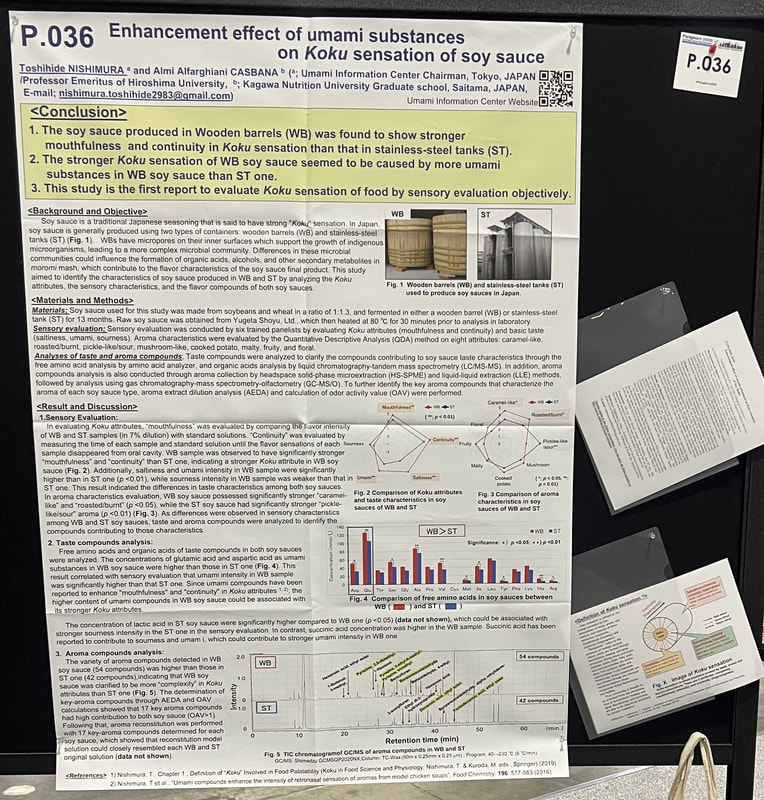Dr.Nishimura Gave a Presentation at the 16th Pangborn Conference
August 2025

The 16th Pangborn Sensory Science Symposium was held in Philadelphia, USA, from August 17 to 21, 2025.
This is an international conference on sensory evaluation held every two years, where the latest findings are presented on topics such as the development of taste sensors, research on olfactory sensors, and sensory evaluation of food and daily products. The symposium brings together experts in sensory research—including taste and smell—from both academia and industry. More than 1,000 participants attended the event.
At this symposium Dr. Toshihide Nishimura of the Umami Information Center (UIC) gave a poster presentation titled "Enhancement effect of umami substances on KOKU sensation of Soy Sauce.".
The study revealed that soy sauce brewed in wooden barrels (known as kioke shoyu) contained higher concentrations of umami substances—specifically free glutamic acid and free aspartic acid—compared to soy sauce brewed in stainless steel tanks (tank shoyu). Sensory evaluation showed that kioke shoyu exhibited stronger characteristics of “mouthfulness” and “continuity,” which are key elements of KOKU sensation, than tank shoyu. This characteristic seemed to be caused by more umami substances in kioke shoyu than tank one.
This study was the first report to evaluate KOKU sensation of food objectively.

At the presentation booth (August 18, 2:00–3:30 p.m.), a tasting session was prepared alongside the poster presentation to help visitors easily understand the concept of KOKU sensation. Using a simple miso soup made by mixing miso powder with water, visitors tasted both miso soups with and without umami substances—monosodium glutamate, disodium inosinate, and disodium guanylate—, and sensed the difference in the sensation of both soups. More than 50 people participated, and all of them recognized the enhancing effect of umami substances on KOKU sensation. Even after the scheduled end time of 3:30 p.m., visitors continued to arrive, making the session a great success.
One notable moment was a comment from a researcher at the Monell Chemical Senses Center, who pointed out the potential impact of sediment derived from miso on sensory evaluation. This kind of perspective was unique to the Pangborn Sensory Science Symposium.
We received generous support for this tasting session from Dr. Chinatsu Kasamatsu (Specially Appointed Professor at Tokyo Kasei Gakuin University), who participated in this symposium and has long been a great supporter of UIC. Dr. Nishimura’s poster presentation with the tasting session help visitors to remain the enhancing effect of umami substances on KOKU sensation in their memory.
On the day after the symposium, we visited the Monell Chemical Senses Center and spent about an hour with Director Dr. Ben Smith, Dr. Valentina, and Dr. Gary Beauchamp. We presented an explanation of “the definition of KOKU sensation and the koku-enhancing effects of umami substances,” followed by a discussion. During the discussion, several questions were raised, including “Are there racial differences in the perception of umami substances?” and “Do kokumi- substances truly enhance human sensory perception?” We plan to continue exchanging information with the Monell Center on topics such as KOKU sensation, kokumi substances, and the KOKU sensation-enhancing effects of umami substances.

